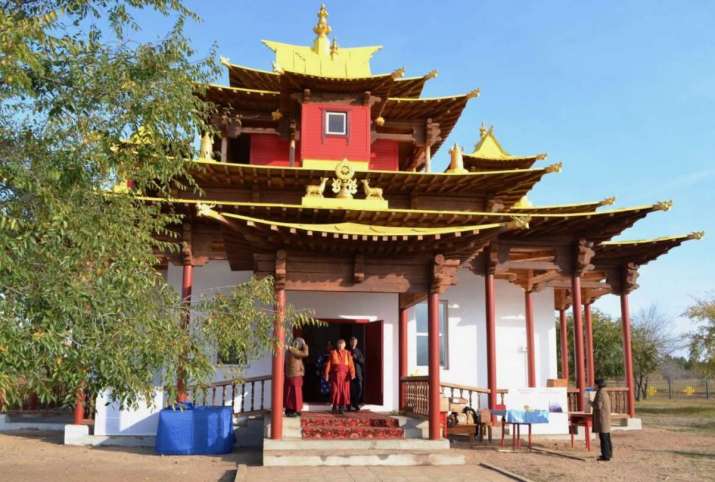
Buryatia accepted Buddhism in the 18th century under the influence of Tibetan and Mongolian Buddhists. The centers of the Buddhist tradition in the region are the datsans—monasteries and monastic universities located throughout Mongolia and Siberia, which follow the Gelug school of Tibetan Buddhism. They have philosophical and medical departments, as well as Tantric practice centers, where the monks study only after completing their education in philosophy. In pre-revolutionary Russia, datsans traditionally existed only in the Buryat territories, most of which are now in Buryatia and Transbaikalia, a mountainous region to the east of Lake Baikal.
The history of the Buryat datsans began with the introduction of Buddhism in the region and has continued until the present day. One of the newly restored datsans in the Russian republic is Khilgantujsky Datsan, named The Palace of Vajrasattva Buddha (Bur: Базарсада Бурханай Ордон). Vajrasattva (Tib: Dorje Sempa, Bur: Базарсада) is a Buddhist deity, whose practice is aimed at purifying negative karma, various obscurations, and broken vows. His palace is the divine abode where his enlightened nature is manifested.
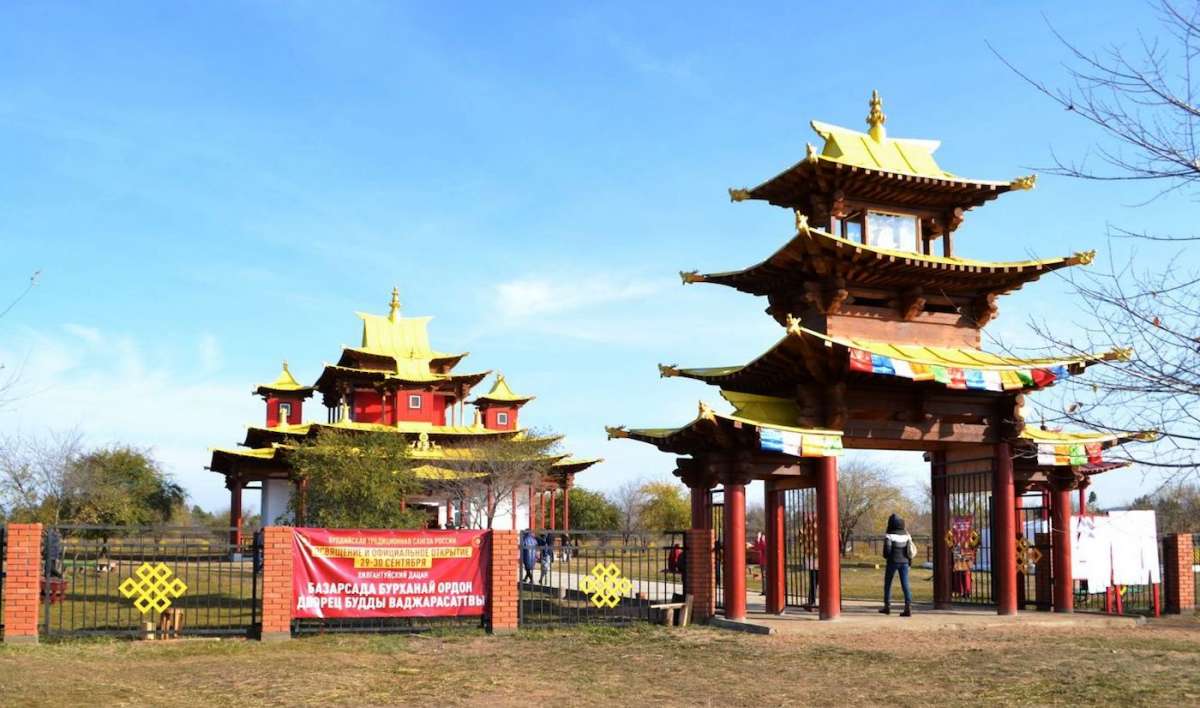
The Palace of Vajrasattva Buddha was opened on the site of the first datsan in Russia in Kyakhtinsky District, an administrative and municipal area in southern Buryatia, near the Mongolia–Russia border. The area where the datsan is located is considered historical and sacred as the 18th century Mongolian lama Yeshe Shavran meditated there for a period of 40 years. Not far from the datsan is the sacred rock Aranzhin Arya Bala, where the self-manifested mantra OM MANI BADME HUM* was discovered by the first Pandito Khambo Lama Damba Darzha Zayayev (1702–77) after he conducted a meditation retreat for several days with 142 of his students.
The beginning . . .
In 1731, in the Erge Burge area, Lama Damba Darzha Zayayev established the first datsan in the territory of the Russian Empire. It was opened in a yurt and was given the name Baldan Braybun (Tib: “The perfect collection of fruits”), and is also known as Murochinsky Datsan, from the name of Murochy Village where it was established.
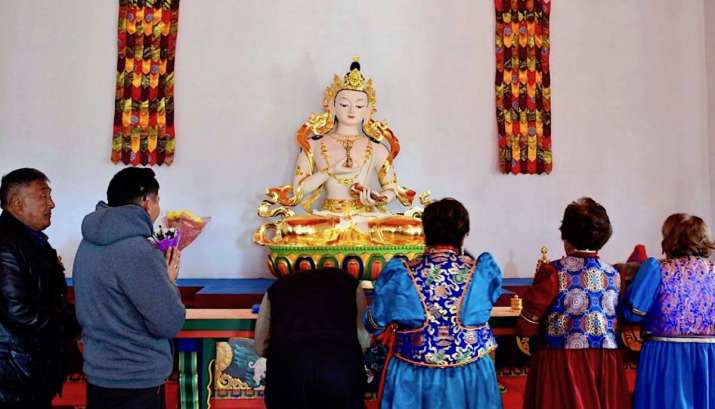
Two years later, the datsan was moved a few kilometers away to Kyakhtinsky District, where a large monastery complex was built and named Khilgantujsky Datsan. It consisted of a tsogchen dugan (the main building of the datsan, where the sangha gathers) and six small wooden dugans, as well as felt yurts, used for household purposes.
In 1741, by decree of the Empress Elizaveta Petrovna (1709–62), Khilgantujsky Datsan was recognized as the main monastery of Eastern Siberia among 11 datsans on the southern border of the Russian Empire. This was the year of the official recognition of the Buddhist tradition in Buryatia by the Russian empress, who was one of the country’s most popular monarchs (r. 1741–62). During her rule, in 1758, Lama Zayayev was officially appointed as the first shirete lama (abbot) of Khilgantujsky Datsan. Six years later, he became the first Pandito Khambo Lama—a high position, established by another eminent female leader of Russia, the empress Catherine II (r. 1762–96), also known as Catherine the Great. She empowered Buddhists in Russia to choose their own spiritual leaders and secured their independence from the Tibetan and Mongolian hierarchs.
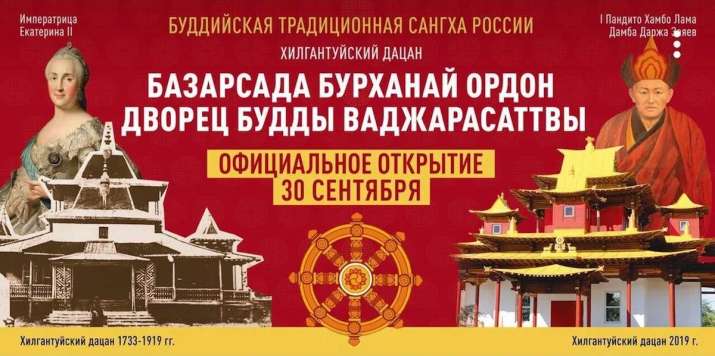
Khilgantujsky Datsan was the official residence of the hierarchs of Russian Buddhism until 1809. In 1911–12, due to flooding, the datsan was moved from the village of Khilgantuy to the foot of the sacred mountain Humun Khaan, also in Kyakhtinsky District.
In the 1930s, during the persecution of religion, the datsan was destroyed and many lamas were repressed. In the 1950s, what remained of the monastery was completely razed and the bricks sold by collective farms for the purchase of transport.
In 2006, restorers found a statue of Vajrasattva Buddha in an ancient suburgan (stupa) in Kyakhtinsky Distric. The statue of the deity of purification was recognized as an auspicious sign for the future revival of the datsan. It was believed that along with the power of Vajrasattva, positive change would come in the region. And this prediction came true 13 years later.
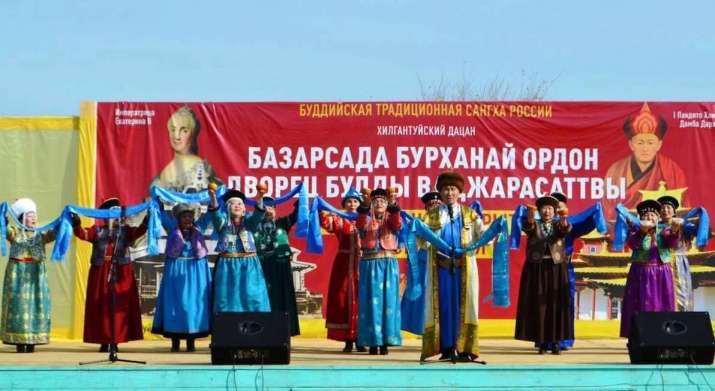
The historical Khilgantujsky Datsan was reopened in the village of Khilgantuy in September 2019 and named The Palace of Vajrasattva Buddha. Its tsogchen dugan was consecrated on 29 September 2019 by the 24th Pandito Khambo Lama Damba Badmayevich Ayusheev, the head lama of the Buryat people and of the Buddhist Traditional Sangha of Russia and senior lamas from Buryatia, Trans-Baikal Territory, Irkutsk Region. The Palace of Vajrasatva Buddha was inaugurated on 30 September 2019 with a prayer ceremony and a cultural program of folk performances from the Kyakhtinsky region.
The restoration of the datsan was carried out through voluntary donations from devotees, organizations, and institution. Funds came from all over Russia, as well as from pilgrims from Inner Mongolia (Inner Mongolia Autonomous Region of the People’s Republic of China). The devotees believe that the revived Khilgantujsky Datsan will bring not only the blessings of Vajrasattva Buddha but will also attract pilgrims and tourists to the sacred region.
* The mantra of Avalokiteshvara, the bodhisattva of compassion, is the most popular mantra in Tibetan Buddhism. The Sanskrit word for lotus, padma, is written padme or peme in Tibetan and badme in the Buryat language.
See more
Хилгантуйский дацан
В Бурятии начали возводить дворец Будды Важрасаттвы
Открытие Хилгантуйского дацана









